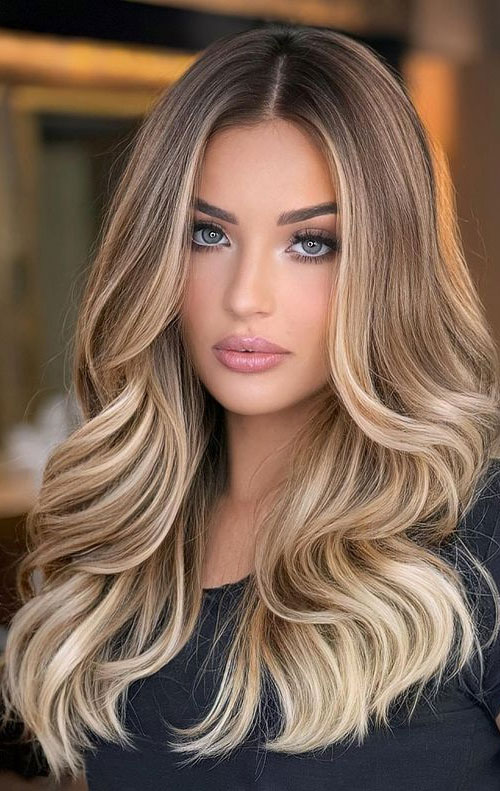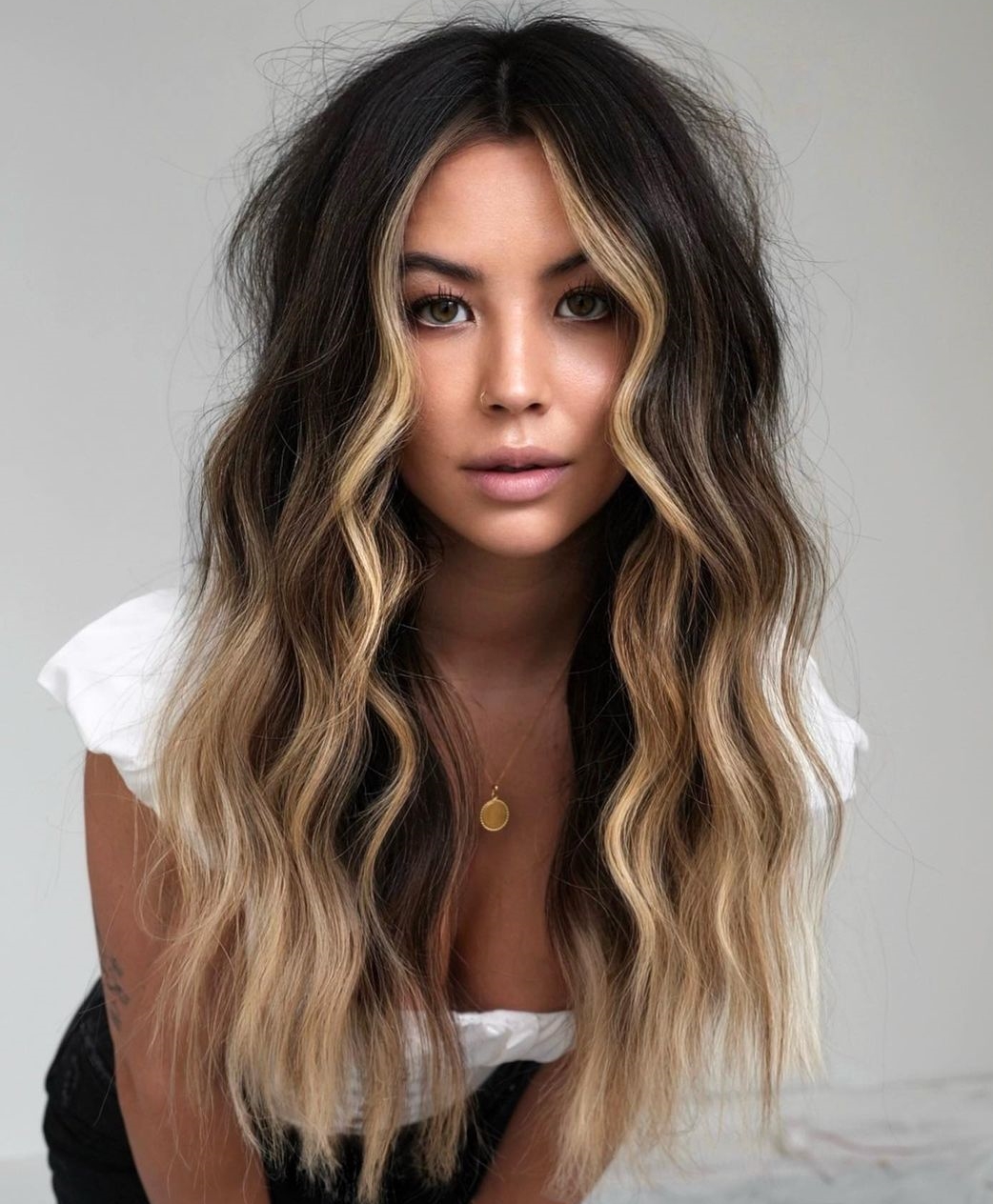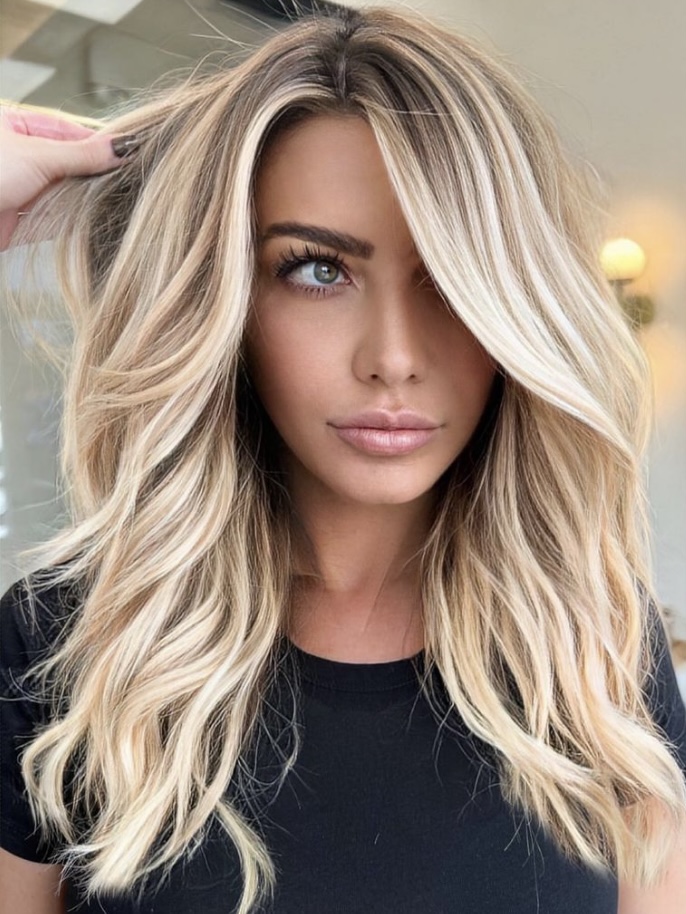Hair Edge Growth Products: Helping Your Hairline Thrive In 2024
Are you suffering from hair loss or baldness, particularly around your hairline? That feeling of seeing your edges thin out can be, well, a bit disheartening, can't it? Many people, quite a lot of us actually, face this common concern. It's something that really affects how we feel about our appearance, and that's totally understandable.
When your hair, which is a protein filament that grows from follicles found in the dermis, starts to pull back, it can feel like a big deal. Our hair, you know, it's one of the defining characteristics of mammals, and for us humans, it covers most of our body, apart from areas of glabrous skin. So, when those delicate hairs around your temples and forehead seem to be disappearing, it can make you wonder what's going on, and perhaps, what you can do about it, you know?
This article is going to look closely at hair edge growth products, giving you some good ideas and practical steps. We will explore what causes thinning, what ingredients might help, and how to use these products for the best possible results. So, if you are looking for ways to encourage fuller, healthier edges, this is for you, really.
Table of Contents
- Understanding Hair Edges and Why They Thin
- What to Look for in Hair Edge Growth Products
- Top Hair Edge Growth Products to Consider
- Beyond Products: Holistic Approaches to Edge Health
- Tips for Applying Hair Edge Growth Products Effectively
- Frequently Asked Questions About Hair Edge Growth
Understanding Hair Edges and Why They Thin
It's a good idea to know what your hair edges are and why they might start to look a little sparse. This understanding, you know, really helps you pick the right hair edge growth products and methods. Your hair, in mammals, is the characteristic threadlike outgrowths of the outer layer of the skin (epidermis) that form an animal’s coat, or pelage. It's present in differing degrees on us, too.
What are Hair Edges?
Your hair edges are those finer, sometimes shorter hairs that frame your face, right along your hairline. They are, in a way, the delicate front line of your hair. Each one of these hairs, like all your hair, grows from a hair follicle. The hair follicle is where your hair begins to grow and is held in place, deep within your skin. These follicles are quite sensitive, actually, and can be more prone to damage than the hair follicles on other parts of your scalp, so.
Identifying your hair type is done by knowing what each category is and how to care for it will ensure you have gorgeous, healthy hair. This applies to your edges, too. They might have a different texture or curl pattern compared to the rest of your hair, which can sometimes make them a bit more fragile, you know?
Common Reasons for Thinning Edges
There are quite a few reasons why your edges might start to thin, and it's not always just one thing. One very common cause is something called traction alopecia. This happens when there's constant pulling or tension on the hair follicles, for example, from very tight hairstyles like braids, ponytails, or even wigs that are too snug. Over time, this constant stress can damage the follicles, making it hard for hair to grow back, or, you know, making it come back much weaker.
Sometimes, genetics play a part. Just like some people are more likely to have general hair thinning, your family history might mean your edges are naturally a bit more delicate or prone to thinning. Hormonal changes, too, can sometimes affect hair growth, especially during things like pregnancy or menopause. Nutritional deficiencies can also contribute; if your body isn't getting enough vitamins and minerals, your hair might not have what it needs to grow strong. Stress, believe it or not, can also play a role in hair loss, so.
Poor hair care practices, like using harsh chemicals, excessive heat styling, or brushing too roughly, can also contribute to edge thinning. It's almost like a combination of factors usually leads to the problem. Understanding these causes is a really important first step in finding the right hair edge growth products and strategies that will actually work for you, you know?
What to Look for in Hair Edge Growth Products
When you're trying to pick out hair edge growth products, it can feel a bit overwhelming with all the choices out there. It's a good idea to know what ingredients tend to be helpful and what types of products are available. This helps you make a more informed decision, you see.
Key Ingredients to Seek Out
Certain ingredients are often found in hair edge growth products because they are thought to encourage hair health and growth. One widely recognized ingredient is minoxidil, which is an over-the-counter treatment that can help stimulate hair follicles. It's something many people consider, apparently.
Other beneficial ingredients often come from natural sources or are vitamins. Biotin, a B vitamin, is pretty popular because it's linked to keratin production, which is what hair is made of. Castor oil, a very thick oil, is often used for its supposed ability to nourish follicles and improve circulation to the scalp. Rosemary oil, too, has gained a lot of attention lately for its potential to stimulate growth, some studies even suggest it's quite effective, you know.
Peptides are another group of ingredients to look for. These are small chains of amino acids, which are the building blocks of proteins. They can help strengthen hair and support the scalp environment. Vitamins like A, C, D, and E, as well as minerals like zinc and iron, are also vital for healthy hair growth. Products with these ingredients aim to give your follicles the best chance to produce new, stronger hair, so.
Product Types
Hair edge growth products come in a few different forms, and each has its own way of being used. Serums are often lightweight liquids that you apply directly to the scalp. They are usually absorbed pretty quickly and can deliver concentrated ingredients right to the follicles, which is good.
Oils, like castor oil or specific blends, are a popular choice. They can provide moisture and nourishment, and the act of massaging them in can also help with blood flow to the scalp. Creams are usually thicker than serums and oils, and they can offer a good barrier of protection while delivering their active ingredients. They are often good for keeping the edges soft and less prone to breakage, too.
Beyond topical applications, there are also supplements you can take by mouth. These typically contain a mix of vitamins, minerals, and other nutrients that support overall hair health from the inside out. It's often a good idea to consider a combination of these types of products, perhaps a topical treatment with a supplement, for a more comprehensive approach to encouraging edge growth, you know?
Top Hair Edge Growth Products to Consider
When thinking about hair edge growth products, it's not about specific brands so much as understanding the categories that tend to deliver results. Many products are out there, each with its own approach to helping your edges thrive. You might find some that focus on stimulating the follicle directly, while others are more about improving the overall health of the existing hair and scalp, so.
For example, some popular choices include topical solutions with active ingredients designed to wake up dormant follicles. Then there are nourishing oils and balms, which are really good for keeping the hair moisturized and preventing breakage, which is a big part of retaining length at the edges. Some products are also specifically formulated to reduce inflammation on the scalp, which can sometimes hinder hair growth, too. It's really about finding what your specific edges need, you see.
You'll also come across products that are more about strengthening the hair shaft itself, making it less likely to snap off. These might contain proteins or other fortifying compounds. The goal with all these hair edge growth products is to create a better environment for hair to grow, or to directly encourage the growth process. It's a bit of a trial and error sometimes to find your perfect fit, honestly.
How to Choose the Right One for You
Picking the right hair edge growth product really comes down to a few things. First, think about what might be causing your thinning. Is it from tight hairstyles, or does it seem more like a general thinning? If it's traction-related, you'll want products that focus on strengthening and nourishing. If it's more widespread, something that stimulates growth might be a better choice, you know?
Consider your hair type, too. What works well for very fine hair might be different for thicker, coarser strands. Some products might be too heavy for certain hair types, for example. Read the ingredient lists carefully. Look for those ingredients we talked about earlier that are known for supporting hair growth. You might also want to read reviews from people with similar hair concerns to yours. This can give you a pretty good idea of what to expect, sometimes.
It's also a good idea to think about your lifestyle. How much time are you willing to dedicate to applying products? Some treatments require daily application, while others might be a few times a week. Choosing something that fits easily into your routine will make it much more likely that you stick with it, you know? Remember, consistency is key with these things, so picking something you'll actually use is very important.
Beyond Products: Holistic Approaches to Edge Health
While hair edge growth products can be a big help, they are usually most effective when combined with good overall hair care and healthy habits. It's sort of like building a strong foundation for your hair to grow on, you know? Think of it as supporting your hair from all angles.
Gentle Hair Care Practices
One of the most important things you can do for your edges is to be very gentle with them. Avoid hairstyles that pull tightly on your hairline. This includes very tight braids, ponytails, or buns that put a lot of tension on those delicate hairs. When you're styling, try to use softer hair ties and avoid excessive pulling, you know? Protective styles can be great, but make sure they aren't too tight around the edges. If it hurts, it's too tight, that's a good rule of thumb.
When brushing or combing your hair, be extra careful around the edges. Use a wide-tooth comb or a soft brush, and detangle gently. Avoid harsh chemicals in your hair products, too, as these can sometimes irritate the scalp and damage follicles. Sleeping on a silk or satin pillowcase can also help reduce friction and breakage on your edges overnight, which is a small change that can make a difference, apparently.
Nutrition and Lifestyle
What you put into your body can really show up in your hair. A balanced diet, rich in proteins, vitamins, and minerals, is very important for healthy hair growth. Hair is a protein filament, after all, so getting enough protein is essential. Foods like lean meats, fish, eggs, and legumes are good sources. Make sure you're getting enough iron, zinc, and vitamins like biotin and vitamin D, too, as these are known to support hair health. Sometimes, a general multivitamin can help fill any gaps, you know?
Managing stress is another big piece of the puzzle. High stress levels can sometimes contribute to hair shedding. Finding ways to relax, whether it's through meditation, exercise, or hobbies, can really benefit your overall health, including your hair. Getting enough sleep is also important for your body's repair and regeneration processes, and that includes your hair follicles, so.
When to Seek Professional Help
If you've been trying hair edge growth products and making lifestyle changes but still aren't seeing the results you want, it might be time to talk to a professional. Sometimes, hair loss can be a sign of an underlying health condition that needs medical attention. Our hair transplant clinic in Dhaka offers advanced hair restoration techniques, for example. They can evaluate your specific situation and give you personalized advice. You can learn more about hair restoration on our site, too.
A dermatologist or a trichologist, which is a hair and scalp specialist, can properly diagnose the cause of your thinning edges. They might suggest stronger treatments, or perhaps even procedures like hair transplantation, beard & mustache transplantation, or other specialized techniques. We are the best hair clinic in Chattogram, and you can book an appointment today for hair loss in our location at 1051/A O R Nizam Road, Suborno Area, beside MFC. They can offer a comprehensive evaluation and deliver solutions that are just right for you, you know?
Tips for Applying Hair Edge Growth Products Effectively
Getting the most out of your hair edge growth products isn't just about what you use, but also how you use it. Proper application can really make a difference in how well these products work for you, you know?
Consistency is Key
This is probably the most important tip. Hair growth is a slow process, and it takes time for products to show results. You need to use your hair edge growth products regularly, as directed on the packaging, for several weeks or even months. Missing applications frequently can really slow down or even stop any progress you might be making. It's a bit like watering a plant; you can't just water it once and expect it to grow immediately, you know? Stick with it, even if you don't see instant changes, because hair growth is a very gradual thing.
Patch Testing
Before you apply any new hair edge growth product all over your edges, it's a really good idea to do a patch test. Apply a small amount of the product to a discreet area of your skin, like behind your ear or on your inner arm. Wait 24 to 48 hours to see if you have any reaction, like redness, itching, or irritation. This helps make sure you won't have an allergic reaction or sensitivity on your delicate hairline, which is pretty important, honestly.
Massage Techniques
When you apply your hair edge growth products, gently massaging the product into your scalp can be very beneficial. This isn't just about spreading the product; it also helps stimulate blood flow to the hair follicles in that area. Increased blood flow means more nutrients and oxygen can reach the follicles, which can support healthier growth. Use your fingertips to gently rub the product in small, circular motions for a few minutes. Be very gentle, as too much friction can actually damage the delicate hairs and follicles, so.
Frequently Asked Questions About Hair Edge Growth
Here are some common questions people ask about hair edge growth and what to expect.
How long does it take for edge hair to grow back?
It can take some time, honestly. Hair growth is a slow process, typically about half an inch per month. For edges, especially if the follicles have been damaged, it might take even longer, perhaps three to six months, or even more, to see noticeable improvement. Patience is very important, you know?
Can thinning edges grow back naturally?
Sometimes, yes, if the cause of thinning is temporary and the follicles aren't severely damaged. For instance, if it's due to a tight hairstyle that you've now stopped wearing, your edges might recover on their own over time. However, if the thinning is more severe or has been going on for a while, you might need help from hair edge growth products or professional treatments, you see.
What causes thinning edges in females?
For females, common causes include traction alopecia from tight hairstyles, hormonal changes (like those during pregnancy or menopause), nutritional deficiencies, stress, and sometimes genetic predispositions. Underlying health conditions can also play a role, so it's a good idea to consult a specialist if you're concerned, you know? You can find a salon near you and book your appointment online today, or check in online to a hair salon near you, and get that amazing haircut and show off your new look.

50+ Trendy Hair Colour For Every Women : Cream Coffee Blonde Balayage

why is it called money piece hair - Yun Parrott

30 Gorgeous Spring Hair Colors That Will Be Huge in 2024 - Your Classy Look